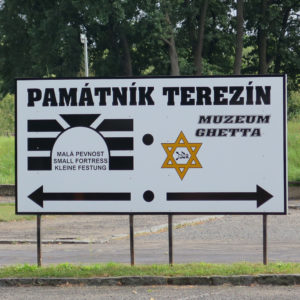 When Annelies and I are planning our trips, we have to take a bunch of stuff into consideration. How much time we have, where we want to go, who do we want to visit, what we want to see/do, etc. We start with a broader view then narrow it down by thinking about cost, transportation logistics, whether or not there’s anything specific any of us want to see, etc.
When Annelies and I are planning our trips, we have to take a bunch of stuff into consideration. How much time we have, where we want to go, who do we want to visit, what we want to see/do, etc. We start with a broader view then narrow it down by thinking about cost, transportation logistics, whether or not there’s anything specific any of us want to see, etc.
It was Hubby Mike who expressed the desire to see a concentration camp. Annelies and I were both of the opinion that wanting to see a concentration camp felt sort of wrong. But then I read something that basically said Holocaust survivors want people to see the sites, read the books, etc. It is important to remember the atrocities.
The Holocaust should always serve as a brutal reminder of what can happen when one group of individuals stops seeing another group as human beings. Perhaps the most important reason to remember is so that the millions who suffered during this bleak time in world history did not die or suffer in vain.
I actually left it up to Hubby to choose a site or two in Germany, the Czech Republic, or Austria of interest so that Annelies and I could work one or more into our plan. We chose Terezin (Theresienstadt), a camp-ghetto established in the town of Terezin, northwest of Prague. (Terezin was originally built in 1780 to serve as a fortress to protect Prague from invaders to the north.)
Terezin isn’t a typical concentration camp. It wasn’t equipped or used to exterminate massive numbers of Jews. It first served as a transit camp/distribution facility. Later it was used as a ghetto/labor camp and prison to hide deportees in order to help conceal their actual fate.
Jews were typically gathered in the adjacent ghetto and the ones who tried to escape or were involved in the resistance were sent to the small fortress for brutal punishment.
As you can see on this map, Terezin consisted of a ghetto in the town and a small fortress just outside of town that housed the Prague Gestapo Police Prison.
The Small Fortress was not a happy place to see, as the pics in this post will show, but it was an important place to see. The various links explain stuff better, for those who want to know more.
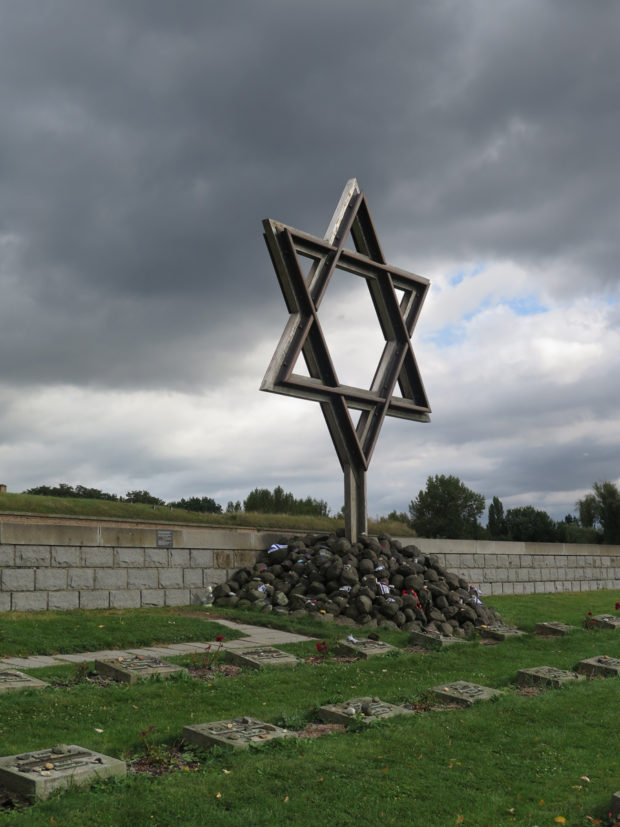
This is an artificial cemetery, created after liberation in 1945. There are 2,386 graves, containing the remains of about 10,000 souls (only 1,133 of the bodies buried here could be identified).
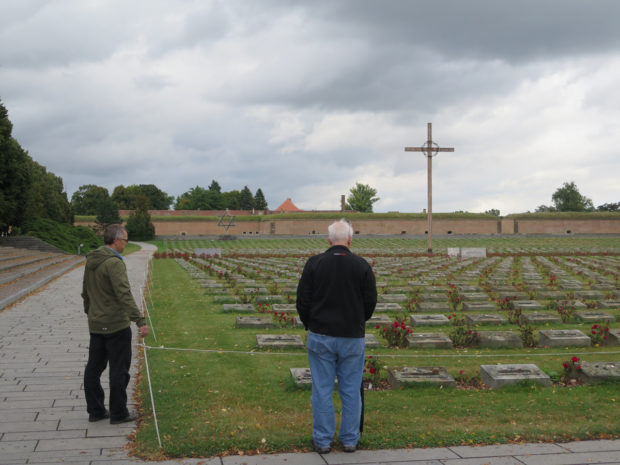
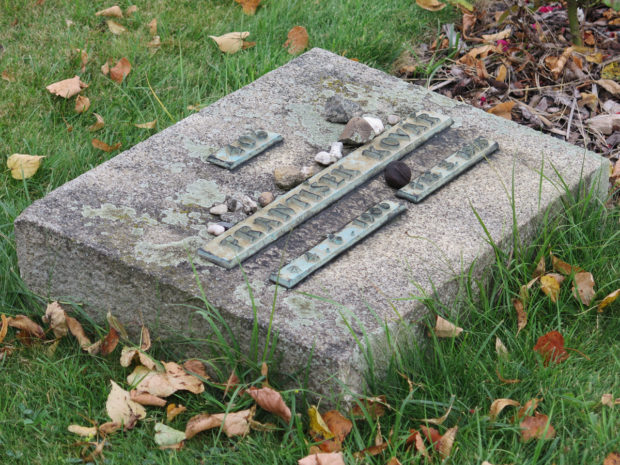
The stones placed on the headstone are not disrespectful as they may appear. According to Shiva.com…
Within the Jewish faith, it is customary to leave a small stone on the grave. The visitor positions the stone on the grave using his or her left hand. Placing a stone on the grave serves as a sign to others that someone has visited the grave. It also enables visitors to partake in the mitzvah tradition of commemorating the burial and the deceased.
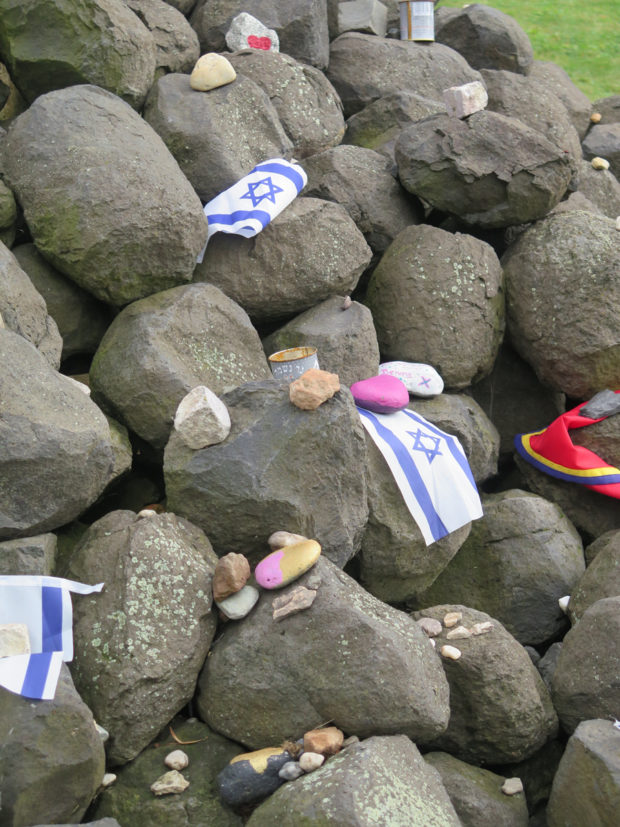
The sky was fittingly somber during our visit.
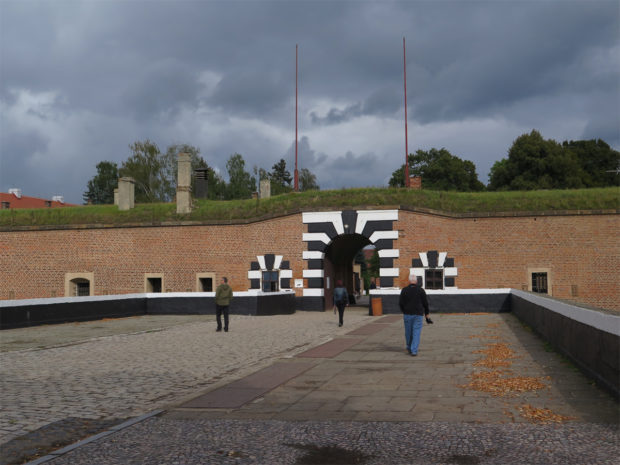
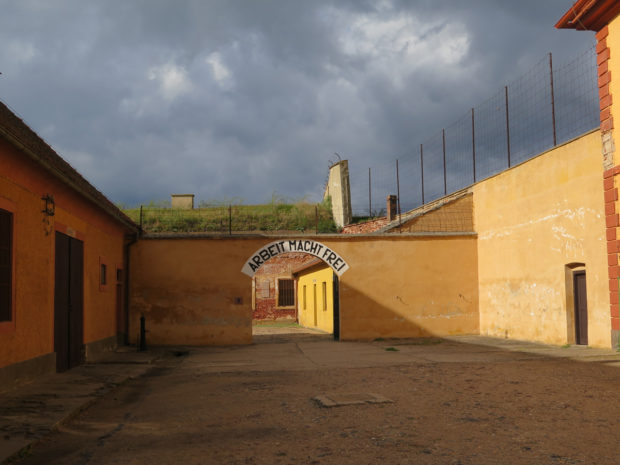
Apparently that sign was common at the concentration camps, which were supposed to be labor camps, not places to facilitate the murder of hundreds upon thousands of Jews and other insurgents. It was unusual for a Gestapo prison.
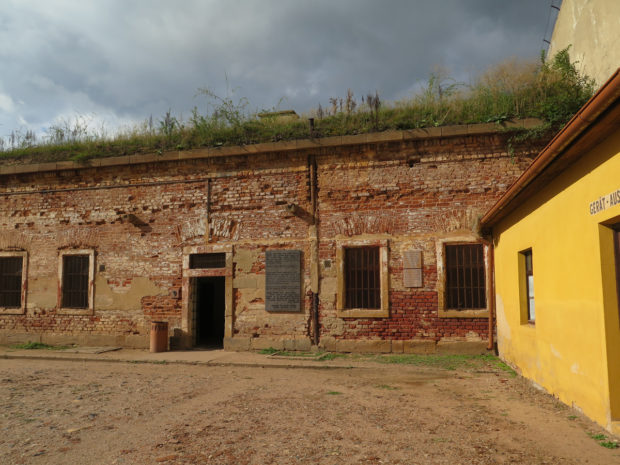
The First Yard is divided into Blocks A and B, housing 17 mass cells and 20 solitary cells. Up to 1,500 inmates lived in The First Yard at any one time.
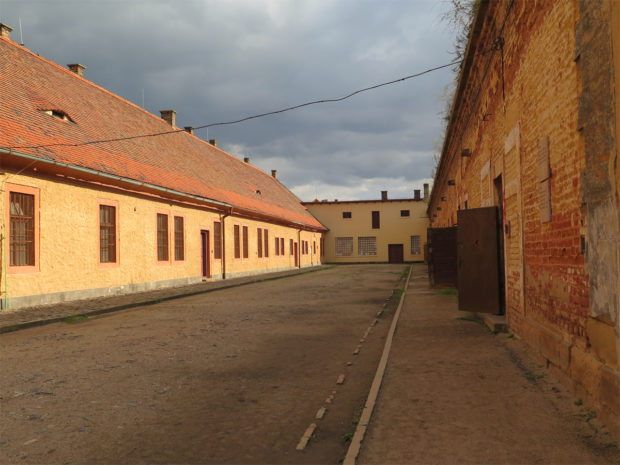
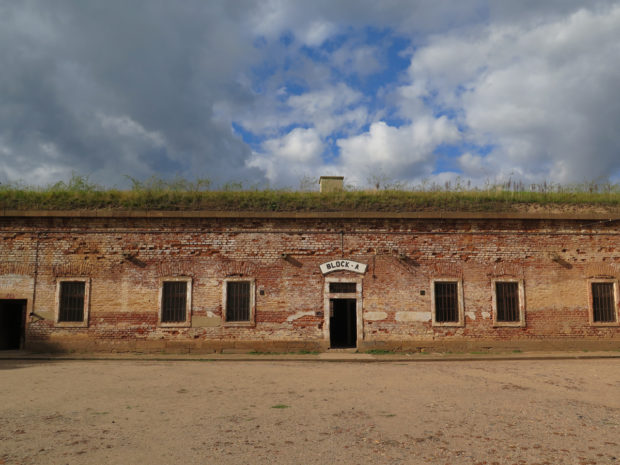
As explained in a Prague Blog I came across while preparing this post:
In the first courtyard for men, roll call took place in the morning and evening. Visitors can see 17 cells. Prisoners were separated by nationality with often 60 to 90 people per cell. Wooden planks made up bunk beds that were three tiers high. Narrow shelves held personal belongings. There was one toilet and one sink, and water had to be reused. The prisoners were not allowed to use light. There was rarely any heating, and humidity tormented the inmates during the summer. Lice and insects contributed to the bad hygiene.
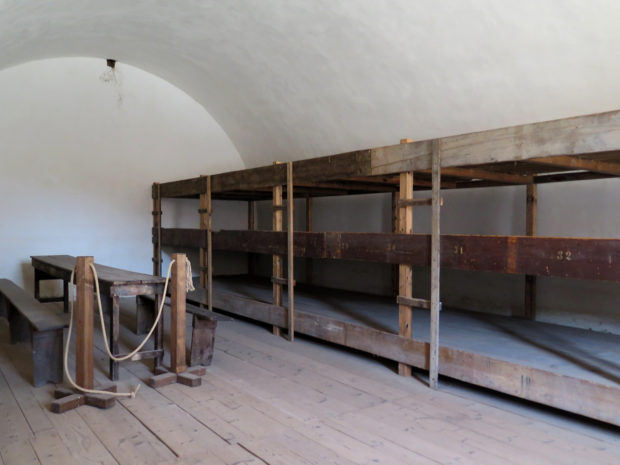
Picture yourself and 59 to 89 others crammed into and living in that small space with one toilet and one sink (remember water often had to be re-used).
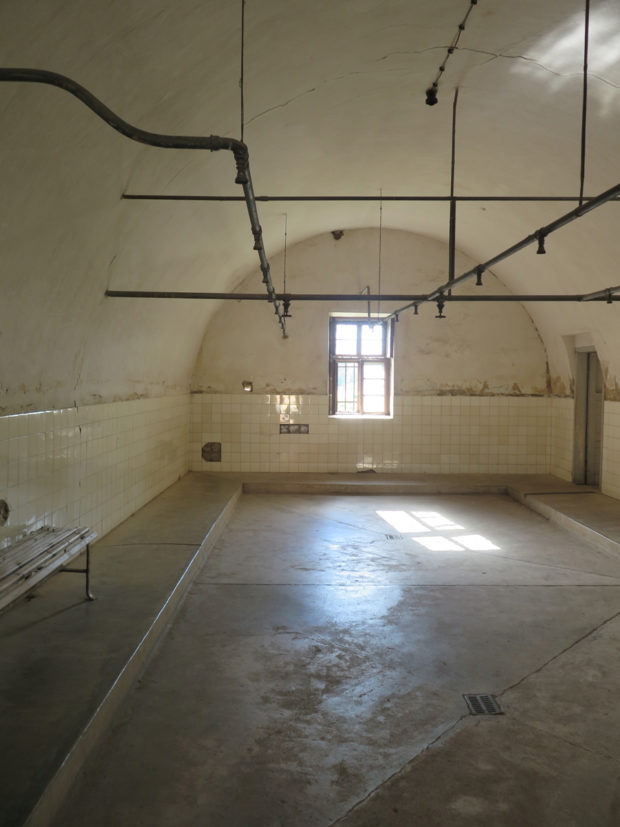
According to that Prague Blog I found:
During 1943 a central shower room was installed with a delousing station for clothes, where two vats or cylinders that worked on hot steam were set up. During the 10 to 12 minutes that the machines killed the insects on the clothes, up to 100 inmates were allowed to shower together. Women sometimes had hot water, but men always had cold water. Then they had to wear the wet clothes, sometimes going straight to work. The longest break between showers was four months.
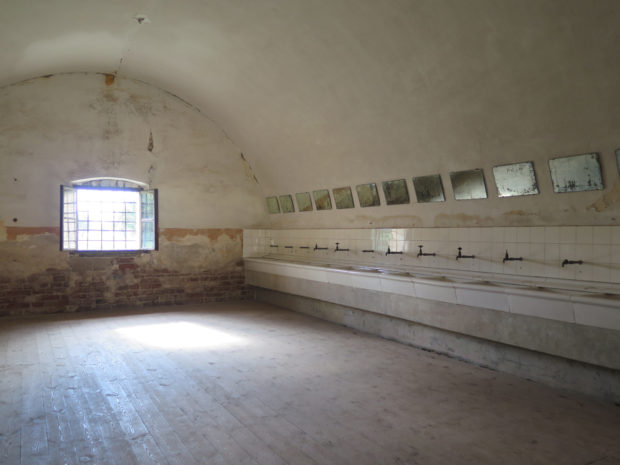
This washroom was one of many tricks the Nazis used to fool the Red Cross into thinking detainees were being treated humanely.
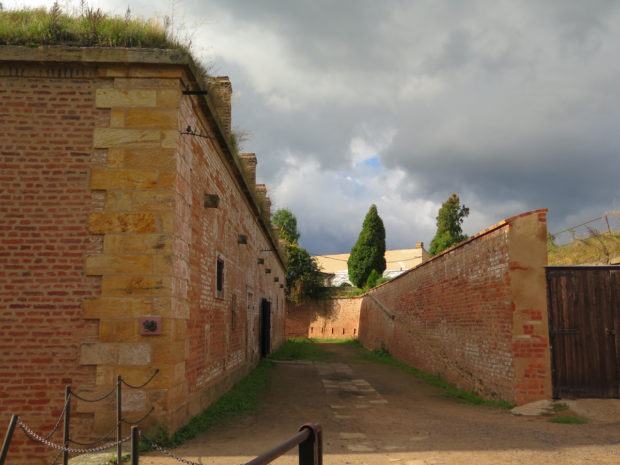
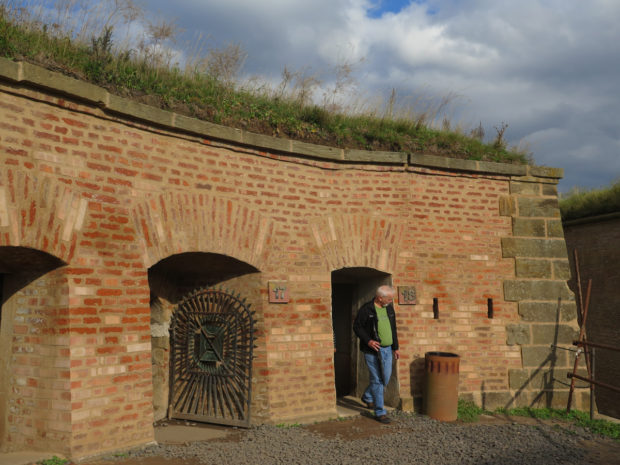
The Mortuary is where the bodies of prisoners tortured to death were stored.
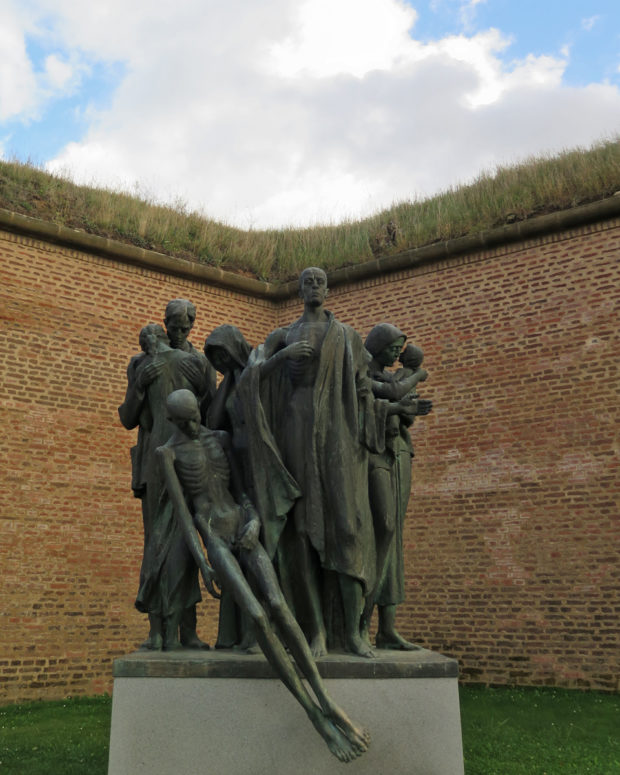
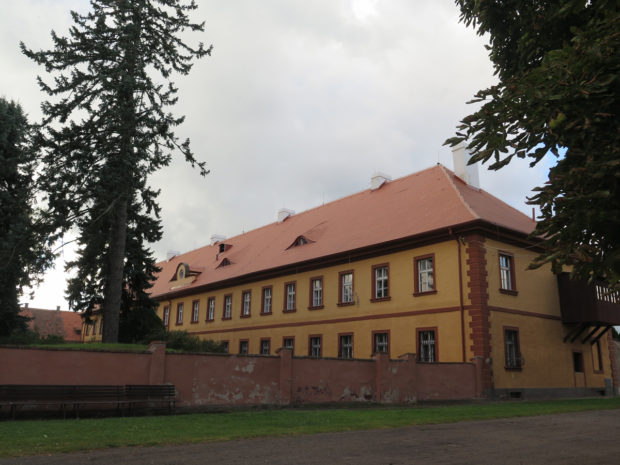
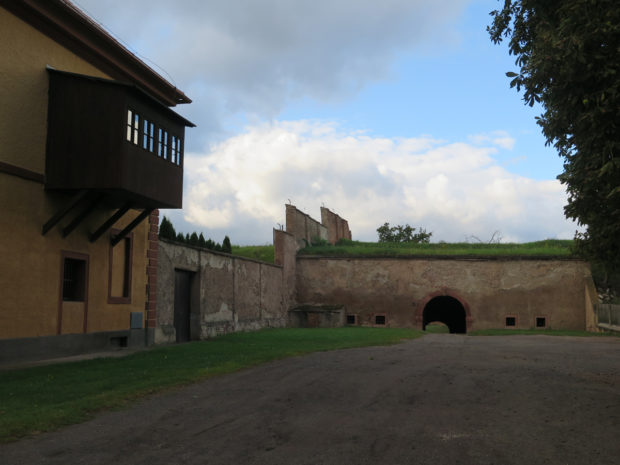
There’s a swimming pool to the right of The Death Gate, which was built to hold water for fighting fires, but was also used by the guards and their families for bathing.
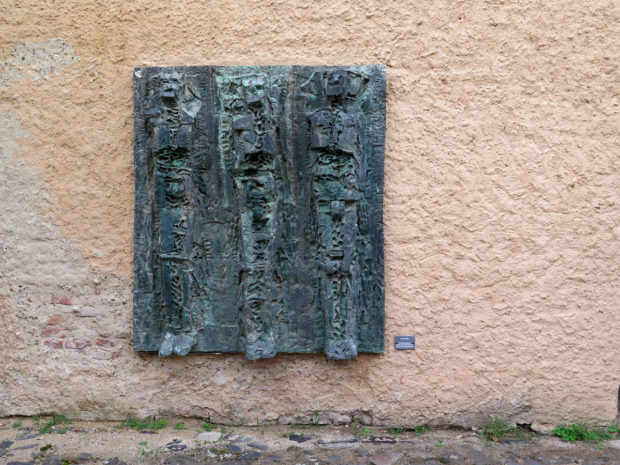
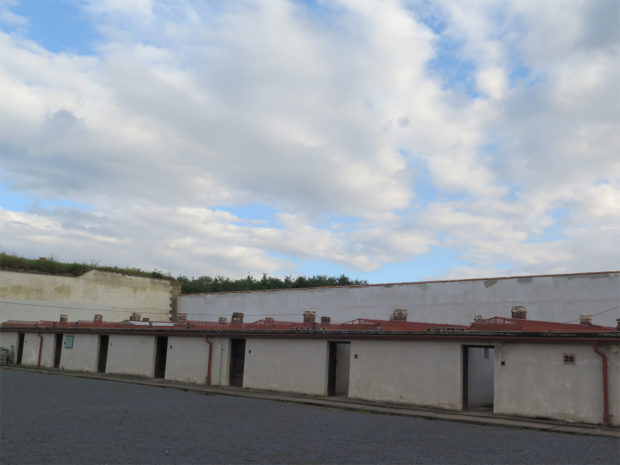
Thanks to the Prague Blog I mentioned previously for this horrific bit of info I hadn’t known before…
The fourth courtyard was built in 1943. Prisoners living there were forced to watch executions. The huge cells held from 400 to 600 people, who slept on the floors or in beds. There were two toilets in each cell and a glass roof added some light but made it hotter during the summer. During 1945 there were no showers in this courtyard, and typhus broke out.
Up to 20 people were held in each of the 125 solitary confinement cells, which did not have toilets or seating.
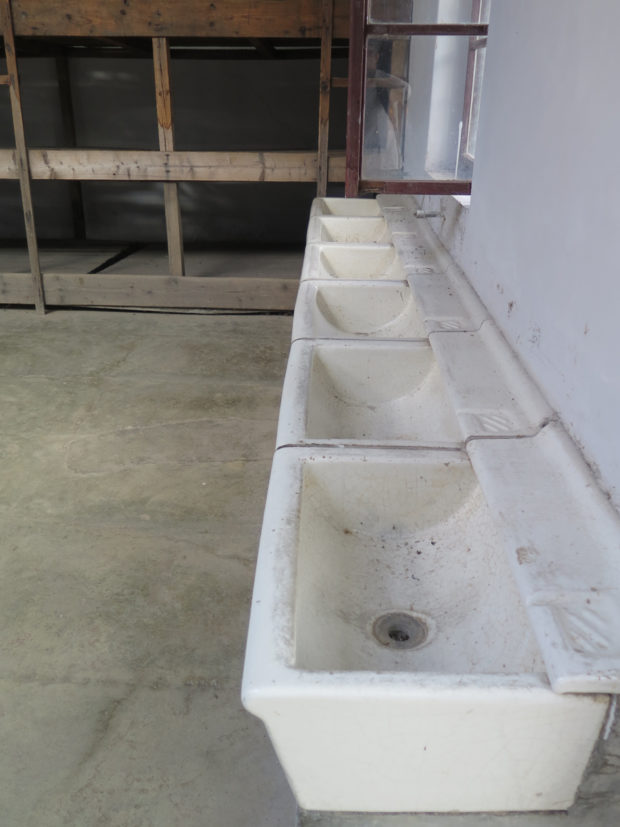
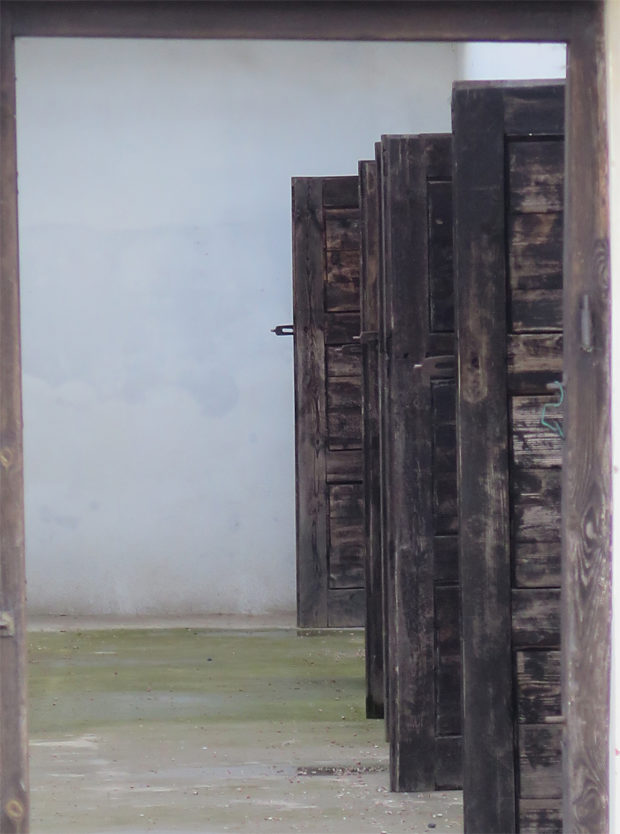
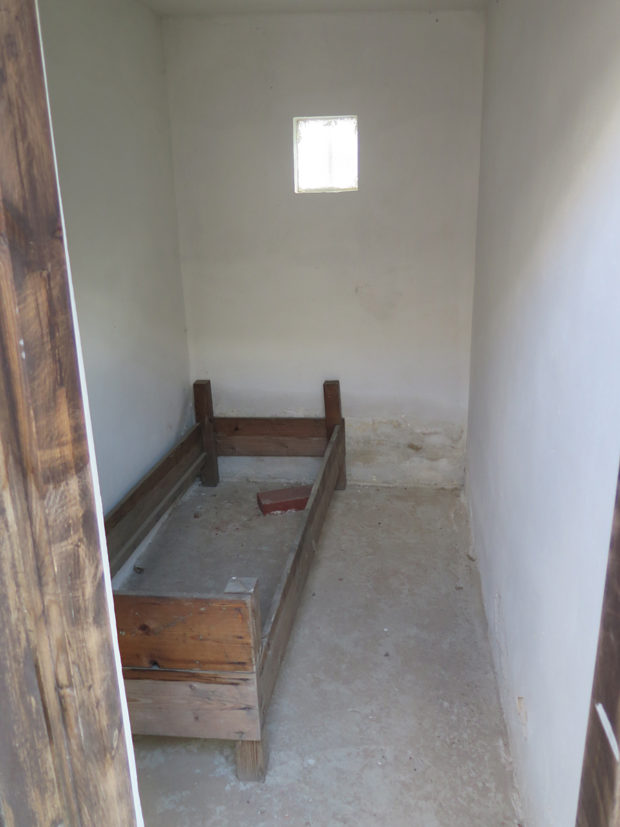
I wouldn’t want to be alone in that cell much less share it with up to 19 others.
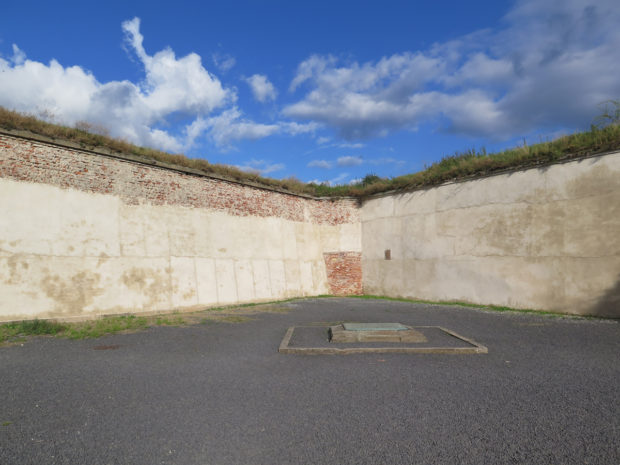
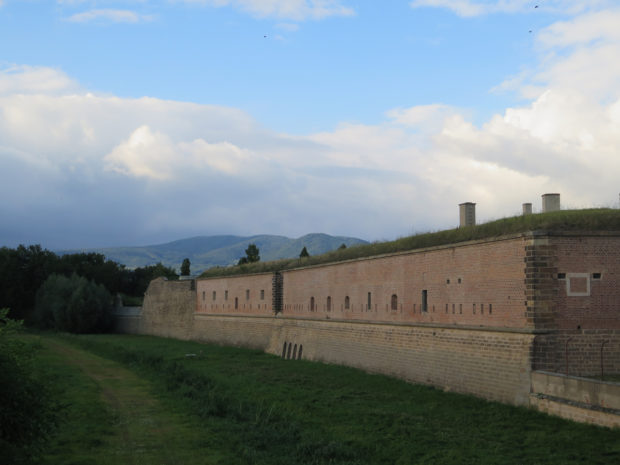
I did say it wasn’t a happy place to see, right?
I am glad we did see it, though. It really IS important to remember.
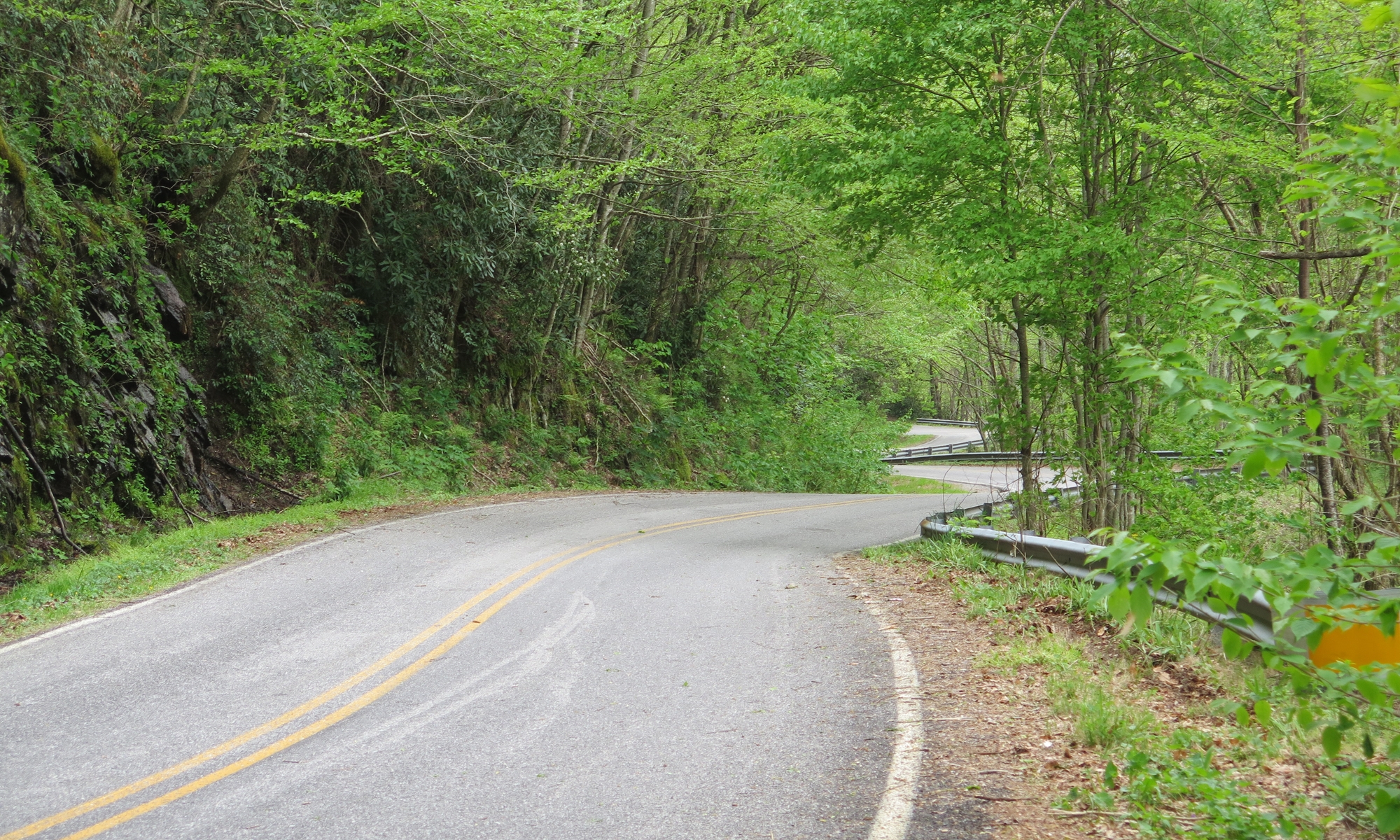
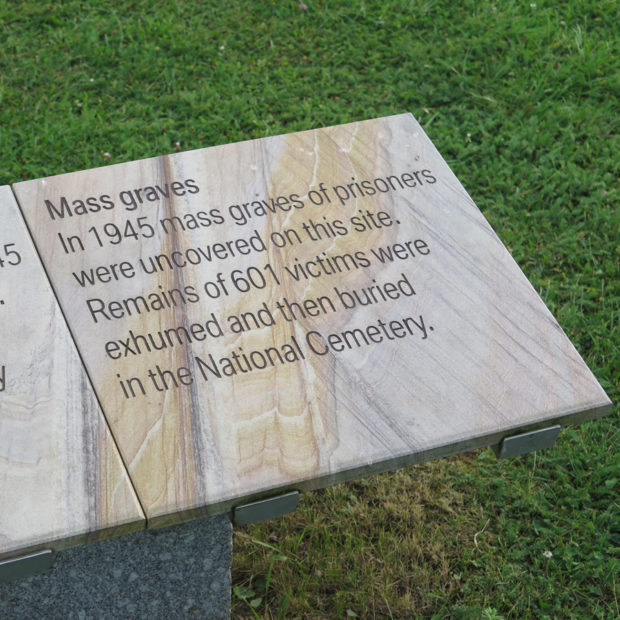
It is important to remember. Even with all of these locations outlining events, there are still some who deny that it ever happened. Any reference to these and similar events have even been removed from some history books. All in the name of “political correctness”.
Far too few people in America today understand that horror. Even fewer understand the conditions that led it.
An analysis of Hitler’s rise has just been published. You can read the New York Times review here.
As you read the review, substitute “Trump” for “Hitler”. The terrifying thing is that far too many of the statements ring true.
I don’t thick anyone that didn’t manage to survive the atrocities could fully understand the horror of what went on at those places. A somber place to visit but a necessary one I believe. We all need to remember what happened so history does not repeat itself (i.e. what David mentioned with Trump)
Right, and Clinton is a saint. History repeats itself for those who choose to ignore it, absolutely. But let’s not blind ourselves to the fact that BOTH of the presidential candidates are crap choices. It’s not only Trump who is a liar, cheat, and a untrustworthy person. The agenda, of either major party does not have the best interests of the United States in mind.
Hate it when political opinions creep into non-political blogs.
It is absolutely necessary that we remember and keep aware to avoid this kind of disgrace in the future. There is only one candidate that could even conjure up similar fears, and we have to stop that possibility in its tracks.